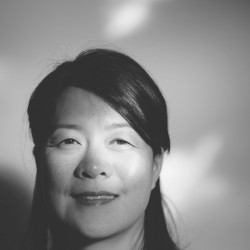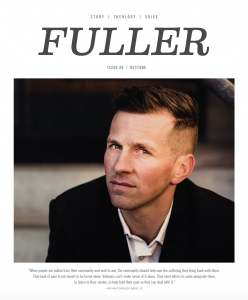
“Healing is possible even though there is no cure.” Those are words that, as a medical family therapist, I often speak to my clients and their loved ones in the wake of a terminal diagnosis or following news that the patient has a chronic health condition that will necessitate long-term, perhaps lifelong, management. Their doctors have handed them this difficult news and now they’re in my office because, regardless of how prepared they were for the news, they’re struggling to navigate the reality of life with chronic illness or the prospect of imminent death.
The understandable longing is for restored normalcy—a return to life before the illness or the diagnosis. But there is no going back. Once we are confronted with our mortality and the vulnerabilities of human life, we are forever changed. Even in the instances where disease is eradicated, the only “normal” that can be attained is what is referred to as a “new normal”—a normal that accounts for the limitations wrought by illness or disability but is nevertheless full of new possibilities. And it is in the midst of this new normal that healing can begin. When we are no longer gripped by the desire to go back to who we once were, we are willing to explore who we are becoming and, perhaps, who we were intended to be in the first place. It is a peculiar phenomenon: the acknowledgement of our limitations and wounds has the potential to catalyze transformation into a restored life lived with greater purpose and integrity.
Restoration requires humility as we realize our profound need for the grace that is experienced through our relationship with God and one another. Only then do we understand that dying to our old selves makes it possible to be restored and made new. The Christian narrative provides a template for this kind of restoration, as we remember that there is no Easter without Good Friday. On this side of heaven we cannot be cured of sin, yet we are called to live out the redemption story that leads us to the life that was intended for us rather than the life that is simply before us.
In this FULLER theology section, the contributors challenge us to consider restoring virtues, practices, and traditions that move us toward healing—toward shalom. The selected themes of creation, hospitality, belonging, identity, hope, and Sabbath all coalesce around the idea of restoring our communion with God and one another, which is undoubtedly how a restored life is intended to be lived.
There is pain all around us, and it is good to be reminded that we can be restored. We cannot—nor should we want to—go back to who we once were. Some conditions may be incurable and lives irreversibly changed, but when we acknowledge our limitations and realize our utter need for God’s mercy, it is then that the healing—and the restored life that we were meant to live—can begin.

Sanar es posible aunque no haya cura.” Esas son palabras que, como terapista familiar médico, le digo a mis pacientes y a sus seres queridos a raíz de un diagnóstico terminal o al recibir noticias que el o la paciente tiene una condición crónica de salud que necesitará tratamiento a largo plazo, tal vez por el resto de su vida. Sus médicos les han entregado noticias difíciles y ahora están en mi oficina porque, sin importar cuán preparados o preparadas estaban para las noticias, se les hace difícil navegar por una vida con una enfermedad crónica o el prospecto de una muerte súbita.
El anhelo comprensible es por una normalidad restaurada—volver a la vida antes de la enfermedad o del diagnóstico. Pero no hay vuelta atrás. Una vez que nos confrontan la mortalidad y las vulnera—bilidades de la vida humana, cambiamos para siempre. Aún cuando la enferme—dad ha sido erradicada, la única “nor- malidad” que se puede obtener es a lo que nos referimos como nuestra “nueva normalidad”—una normalidad que toma en cuenta las limitaciones traídas por la enfermedad o discapacidad pero que aún así está llena de nuevas posibilidades. Y es en medio de esta nueva normalidad que la sanidad puede comenzar. Cuando el deseo de volver a ser quienes éramos ya no nos agarra, tenemos la disposición de explorar en quien nos estamos convirtiendo, y tal vez, en quienes estábamos destinados y destinadas a ser en primera instancia. Es un fenómeno peculiar: el reconocimiento de nuestras limitaciones y heridas tiene el potencial de catalizar transformación hacia una vida restaurada con un mayor propósito e integridad.
La restauración requiere humildad, a medida que nos damos cuenta de nuestra profunda necesidad por la gracia que es experimentada por medio de nuestra relación con Dios y el prójimo. Solo ahí entendemos que el morir de nuestro viejo yo, le posibilita ser restaurado y hecho nuevo. La narrativa cristiana provee un modelo para este tipo de restauración, mientras recordamos que no hay Pascua sin el Viernes Santo. En este lado del cielo no podemos ser sanados o sanadas de pecado, pero aún así tenemos el llamado de vivir la historia de redención que nos dirige a la vida que fue diseñada para nosotros y nosotras, en vez de la vida que simplemente nos precede.
En esta edición de FULLER de teología, los y las contribuyentes nos retan a considerar restaurar virtudes, prácticas y tradiciones que nos muevan hacia la sanidad—hacia el Shalom. Los temas seleccionados de creación, hospitalidad, pertenencia, identidad, esperanza y el día de reposo, todos se incorporan alrededor de la idea de restaurar nuestra comunión con Dios y el prójimo, que indudablemente es como una vida restaurada fue diseñada a ser vivida.
Hay dolor a nuestro alrededor, y es bueno recordar que podemos ser restaurados y restauradas. No podemos—y no debemos querer—volver a ser quienes éramos. Algunas condiciones pueden ser incurables y vidas cambiadas irreversiblemente, pero cuando reconocemos nuestras limitaciones y nos damos cuenta de nuestra profunda necesidad de la misericordia de Dios, es ahí cuando la sanidad—y la vida restaurada que estamos destinados y destinadas a vivir—puede comenzar.

“치료법이 없다 해도 치유는 가능합니다 (Healing is possible even though there is no cure).” 가정의학과 상담사로서 저는 불치병 선고를 받았거나, 평생 다스려야 할 지 모르는 만성병 진단을 받은 환자, 그리고 보호자께 종종 이런 말씀을 드립니다. 의사로부터 감당하기 어려운 소식을 전해 듣고서 이분들이 제 진료실을 찾아오시는 이유가 있습니다. 지병을 안고 살아야 한다는 사실, 죽음이 임박했다는 사실은 설령 마음의 준비가 됐을지라도 쉽사리 짊어지고 갈 수가 없기
때문입니다.
모든 이들의 바람은 정상으로의 회복, 즉 발병이나 진단 이전의 삶으로 돌아가는 것입니다. 하지만 돌아갈 방법은 없습니다. 피할 수 없는 죽음과 생명의 연약함을 직면할 때 인간은 다시는 돌이킬 수없는변화를경험합니다.설령병이완치된다 하더라도 우리가 되찾을 수 있는 ‘정상(normal)’은 ‘새로운 정상(new normal)’이라 일컫는 상태로서, 질병이나 장애에 따르는 제약을 수용하면서 동시에 새로운 가능성이 가득한 상태입니다. 치유는 바로 이 새로운 정상의 한복판에서 시작됩니다. 과거의 자신으로 돌아가고픈 욕망의 손아귀에서 벗어날 때 비로소 우리는 성장해가는 자신, 아마도 태초에 하나님께서 의도하신 자신의 모습을 탐색할 의지를 갖게 됩니다. 이것은 이상한 현상입니다. 자신의 한계와 상처를 인정하는 행위에는 변화를 촉발시키는 힘이 있어, 우리는 더숭고한목적과고결함이있는회복된삶으로 이끌립니다.
우리는 하나님과 사람들과의 관계에서 우리에게 은혜가 절실히 필요함을 깨닫습니다. 그래서 회복에는 겸손이 필요합니다. 오직 겸손해질 때 우리는 옛 자아에 대해 죽어야 비로소 회복되고 새로운 존재가 될 수 있음을 이해하게 됩니다. 기독교 서사(narrative)가 바로 이러한 회복의 원형을 보여주는데, 우리는 부활절이 있으려면 먼저 성금요일이 있어야 함을압니다.이땅의천국을살아가는동안 우리의 죄는 완치될 수 없습니다. 우리는 그저 앞에 놓인 삶을 사는 것이 아니라, 하나님께서 의도하시는 삶으로 이끌어줄 구원의 이야기를 살아내도록 부르심을 받았습니다.
이번호《풀러》에실린글들은회복의 가치, 회복의 실습, 회복의 전통 등 우리를 치유로, 그리고 샬롬으로 나아가게 하는 것들에 대해 생각할 여지를 던져줍니다. 이번 호에서 선택한 주제인 창조, 환대, 소속감, 정체성, 희망, 안식일 등은 모두 하나님과의 연합 회복, 서로와의 연합 회복이라는 개념을 중심으로 얽혀있으며, d 이회복된연합은회복된삶이드러내야할 구체적인 모습입니다.
고통은 우리 주변 어디에나 존재하기에 우리가 회복될 수 있음을 떠올리는 것은 즐거운 일입니다. 우리는 과거의 자신으로 돌아갈 수도 없고, 돌아가려 해서도 안 됩니다. 우리의 어떤 상황은 치료가 불가능하고 삶은 돌이킬 수 없이 바뀌었을 수있습니다.하지만우리가자신의한계를 인정하고 하나님의 은혜가 무조건적으로 필요함을 깨달을 때, 바로 그때 치유, 그리고 하나님께서 바라시는 회복된 삶이 시작될 수 있습니다.


